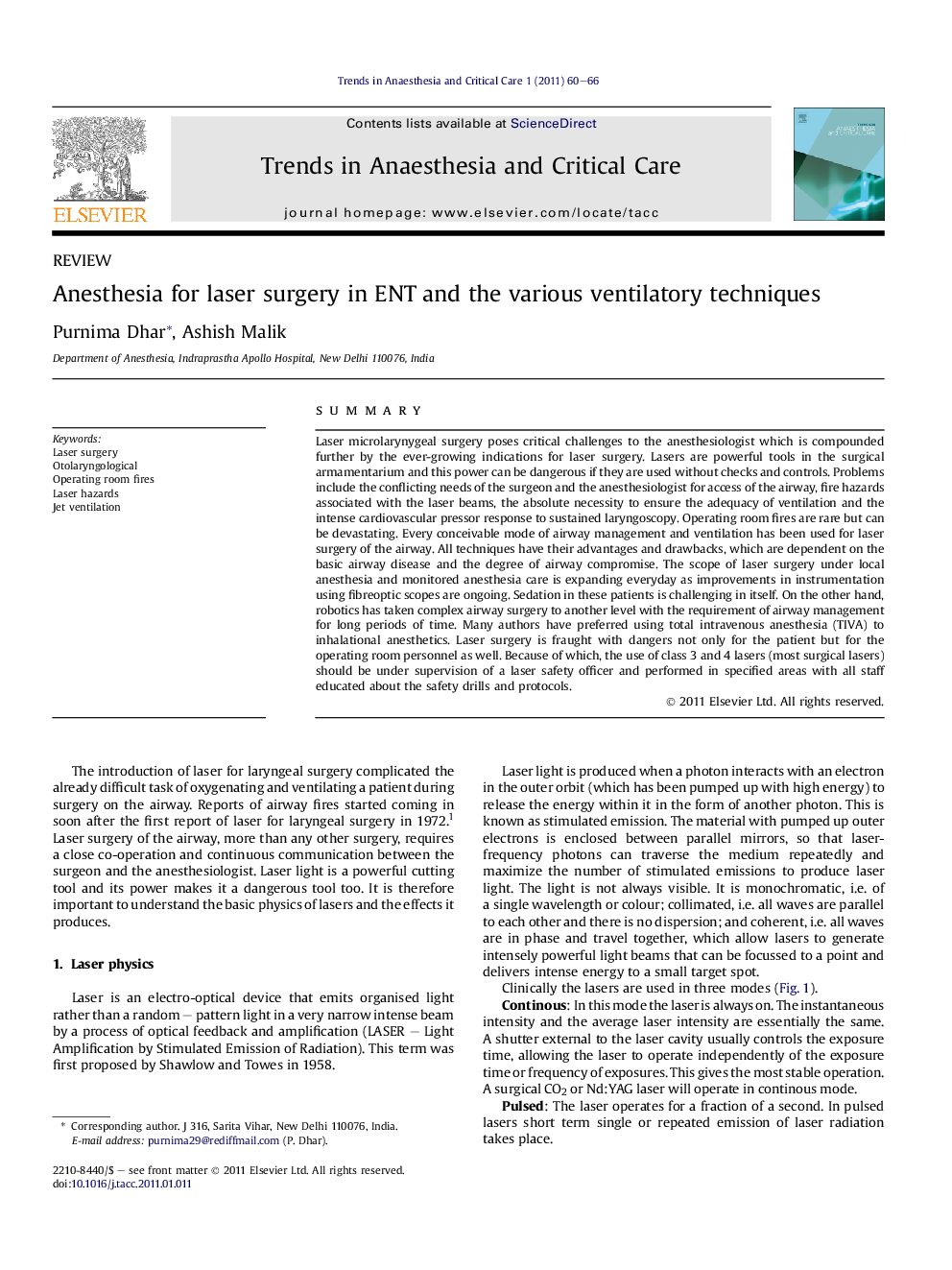| Article ID | Journal | Published Year | Pages | File Type |
|---|---|---|---|---|
| 2772854 | Trends in Anaesthesia and Critical Care | 2011 | 7 Pages |
summaryLaser microlarynygeal surgery poses critical challenges to the anesthesiologist which is compounded further by the ever-growing indications for laser surgery. Lasers are powerful tools in the surgical armamentarium and this power can be dangerous if they are used without checks and controls. Problems include the conflicting needs of the surgeon and the anesthesiologist for access of the airway, fire hazards associated with the laser beams, the absolute necessity to ensure the adequacy of ventilation and the intense cardiovascular pressor response to sustained laryngoscopy. Operating room fires are rare but can be devastating. Every conceivable mode of airway management and ventilation has been used for laser surgery of the airway. All techniques have their advantages and drawbacks, which are dependent on the basic airway disease and the degree of airway compromise. The scope of laser surgery under local anesthesia and monitored anesthesia care is expanding everyday as improvements in instrumentation using fibreoptic scopes are ongoing. Sedation in these patients is challenging in itself. On the other hand, robotics has taken complex airway surgery to another level with the requirement of airway management for long periods of time. Many authors have preferred using total intravenous anesthesia (TIVA) to inhalational anesthetics. Laser surgery is fraught with dangers not only for the patient but for the operating room personnel as well. Because of which, the use of class 3 and 4 lasers (most surgical lasers) should be under supervision of a laser safety officer and performed in specified areas with all staff educated about the safety drills and protocols.
